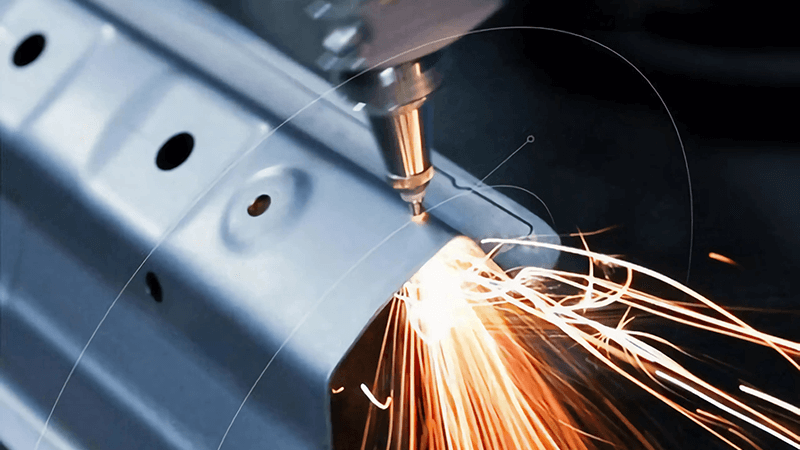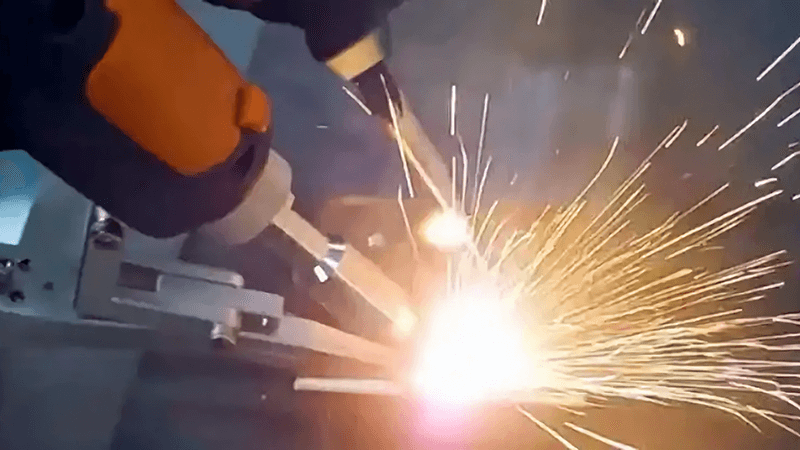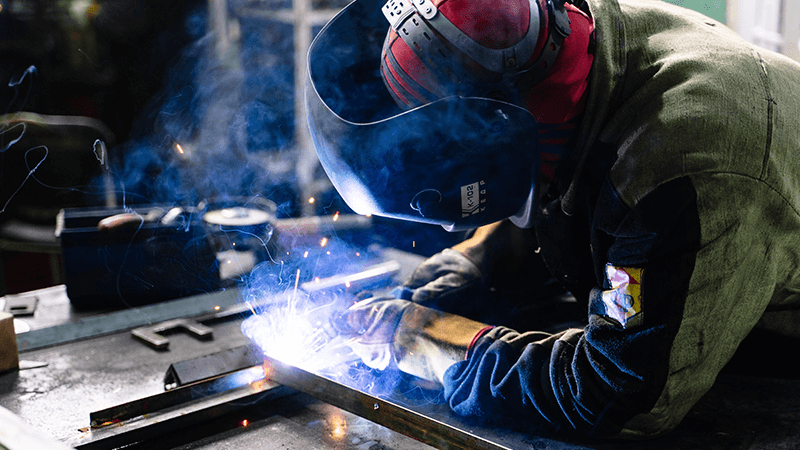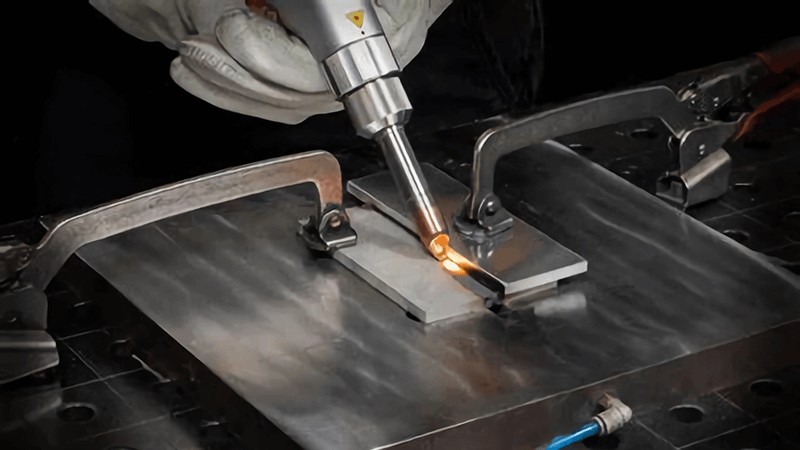Laser welding is precision work that balances power, speed, and focus to fuse metals seamlessly. When done right, it delivers clean, smooth joints that outperform traditional methods.
Laser welding is achieved by focusing a high-energy beam to melt and fuse materials along a joint, offering deep penetration, minimal distortion, and clean finishes ideal for precision manufacturing.
Laser welding isn’t just about joining metals—it’s about mastering energy. At Kirin Laser, we focus on control. From stainless to aluminum, each weld is a fine balance of parameters tuned through trials until it’s flawless. Let’s break down how we make it work.

What is required for laser welding?
Laser welding is both art and science. Without the right equipment and setup, precision is impossible.
To perform laser welding, you need a fiber laser source, a precise focusing head, stable motion control, and proper shielding gas to protect the weld from oxidation.
Dive Deeper: The Essentials of Laser Welding Setup
At Kirin Laser, we see every weld as a controlled experiment. Our fiber laser welding machines1 rely on a few core elements:
1. Laser Source
A fiber laser generator2 produces a concentrated beam with high energy density. The beam’s wavelength (usually around 1070 nm) allows excellent absorption in metals like stainless steel, aluminum, and copper.
2. Optical System
A focusing lens and collimator shape and direct the beam. Spot size determines penetration depth—small for thin sheets, slightly larger for deeper welds.
| Component | Function | Importance |
|---|---|---|
| Fiber Laser | Provides energy | Determines weld depth and speed |
| Collimator | Aligns the beam | Controls divergence |
| Focusing Head | Concentrates energy | Defines spot size and density |
3. Motion and Control
Precision motion ensures beam stability. For handheld systems, we use galvanometer heads or wobble heads to manage beam oscillation—critical for gap tolerance.
4. Shielding Gas
Argon or nitrogen shields the molten pool from oxygen. This prevents oxidation and ensures smooth surface finishes.
When I demonstrate our machine to clients, I always show the control interface—where we log “recipes.” Each metal has its own formula: power, speed, focus offset, wobble amplitude, and gas flow. Once dialed in, the results speak for themselves.

Is laser welding TIG or MIG?
This is one of the most common questions we get from customers transitioning from traditional welding.
Laser welding is neither TIG nor MIG; it’s a separate process that uses a concentrated laser beam instead of an electrode to create fusion between metals.
Dive Deeper: Understanding the Difference
When people first see a fiber laser welding machine3, they often try to relate it to TIG or MIG. Here’s the reality:
TIG (Tungsten Inert Gas) Welding
TIG uses a non-consumable tungsten electrode. It offers fine control and high-quality welds but is slow, requires skill, and adds filler wire manually.
MIG (Metal Inert Gas) Welding
MIG uses a consumable wire electrode and is faster, more automated, but often leads to spatter and distortion on thin materials.
Laser Welding
Laser welding replaces the arc with a light beam4. There’s no contact, minimal heat-affected zone, and nearly no deformation.
| Process | Heat Source | Filler Use | Speed | Quality | Typical Application |
|---|---|---|---|---|---|
| TIG | Electric arc | Optional | Slow | Very high | Thin metals |
| MIG | Electric arc | Required | Medium | Medium | General fabrication |
| Laser | Laser beam | Optional | Very fast | Excellent | Precision manufacturing |
When I switched a client from TIG to laser, the first reaction was disbelief—the joint was narrow, glossy, and strong. He didn’t even need post-polishing. As he said, “It feels like welding with light.”

Is laser welding faster than MIG welding?
Speed is often the deciding factor for industrial clients comparing technologies.
Yes, laser welding is significantly faster than MIG welding because it concentrates energy into a small spot, achieving full penetration at higher travel speeds with less heat distortion.
Dive Deeper: Why Laser Welding Wins in Speed
Let’s put it in numbers. On average, MIG welding travels at 30–50 cm/min, while fiber laser welding5 can exceed 200 cm/min—depending on material and power.
1. Energy Efficiency
Laser beams deliver heat exactly where needed. There’s minimal thermal loss, which means faster melting and solidification.
2. Automation Potential
Laser systems integrate easily with CNC platforms6 or robot arms, reducing operator fatigue and enabling 24/7 production.
3. Reduced Post-Processing
Because there’s little spatter and no slag, you skip grinding or polishing steps—saving even more time.
| Factor | MIG Welding | Laser Welding |
|---|---|---|
| Travel Speed | 30–50 cm/min | 200–300 cm/min |
| Heat Input | High | Low |
| Distortion | Moderate | Minimal |
| Setup Time | Longer | Shorter |
| Post-Work | Grinding required | None or minimal |
When I optimized our fiber laser for a sheet metal manufacturer, the welding time dropped by 70%, and product yield went up. That’s when they understood speed is more than movement—it’s precision efficiency.
%[High-speed fiber laser welding](https://kirinlaser.com/wp-content/uploads/2024/11/laser-welding-machine-can-use-automatic-welding-head.png"Laser Welding Speed Demo")
What is the maximum gap for laser welding?
Gap tolerance often defines whether laser welding is practical for a given job.
The maximum gap for laser welding is typically between 0.1 mm to 0.3 mm, but with wobble welding heads or filler wire, it can reach up to 0.5 mm.
Dive Deeper: Managing Gaps with Wobble Control
In traditional welding, a bit of a gap isn’t a big deal. But for fiber laser welding7, alignment matters because the beam is small and precise.
1. Wobble Function
Kirin Laser’s fiber systems include wobble heads8, which oscillate the beam rapidly in circular or figure-eight paths. This spreads energy, bridges gaps, and improves fusion uniformity.
2. Filler Wire Integration
When joining materials with small inconsistencies, a filler wire system can be attached. It’s common for aluminum and thicker plates.
3. Parameter Adjustment
We fine-tune:
- Laser power
- Travel speed
- Focus position
- Oscillation amplitude
Each variable affects how much “bridge” the weld can form across the gap.
| Gap Size | Recommended Solution | Notes |
|---|---|---|
| ≤ 0.1 mm | Direct laser welding | Best for clean, tight joints |
| 0.2–0.3 mm | Wobble welding head | Improves fusion tolerance |
| 0.4–0.5 mm | Wobble + filler wire | Common for aluminum |
| >0.5 mm | Not recommended | Precision fit required |
One of our aluminum enclosure clients used to reject 20% of parts due to gaps. With our wobble system and refined settings, they reached 99.2% pass rate. The improvement was instant and measurable.

Conclusion
Laser welding9 is not just another joining process—it’s precision energy control. At Kirin Laser, we focus on repeatability, accuracy, and customization. From stainless seams to aluminum casings, we fine-tune each weld through parameter trials and logged data. That’s how we help manufacturers replace old systems, reduce waste, and discover what it feels like to truly weld with light.
-
Explore this link to understand the advantages of fiber laser welding machines, including efficiency and precision in various applications. ↩
-
Learn about the technology behind fiber laser generators and their role in producing high-quality welds. ↩
-
Explore the advantages of fiber laser welding machines for precision and efficiency in manufacturing. ↩
-
Learn about the technology behind laser welding and how light beams create strong, precise welds. ↩
-
Explore the advantages of fiber laser welding to understand its efficiency and speed compared to traditional methods. ↩
-
Learn how CNC platforms enhance laser welding processes, improving automation and production efficiency. ↩
-
Explore the advantages of fiber laser welding to understand its precision and efficiency in various applications. ↩
-
Learn how wobble heads enhance welding quality and consistency, making them essential for precision tasks. ↩
-
Find the best laser welding machine and laser welding solutions from Kirin Laser, clicking this link to get all youe needs for your business. ↩





